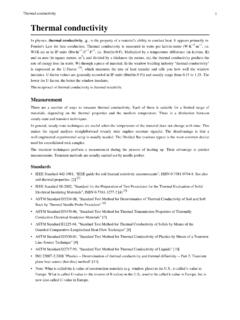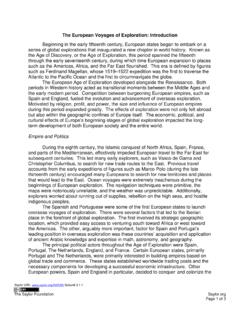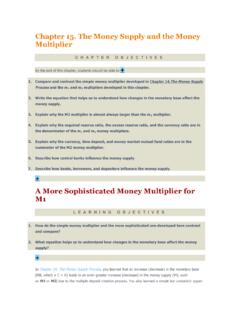Transcription of The Abbasid Dynasty: The Golden Age of Islamic Civilization
1 Saylor Saylor of6 The Abbasid Dynasty: The Golden Age of Islamic CivilizationThe Abbasid Caliphate, which ruled the Islamic world, oversaw the Golden age ofIslamic culture. The dynasty ruled the Islamic Caliphate from 750 to 1258 AD, making itone of the longest and most influential Islamic dynasties. For most of its early history, itwas the largest empire in the world, and this meant that it had contact with distantneighbors such as the Chinese and Indians in the East, and the Byzantines in the West,allowing it to adopt and synthesize ideas from these Abbasid RevolutionThe Abbasid Dynasty overthrew the preceding Umayyad Dynasty, which wasbased in Damascus, Syria.
2 The Umayyads had become increasingly unpopular,especially in the eastern territories of the caliphate. The Umayyads favored SyrianArabs over other Muslims and treatedmawali, newly converted Muslims, as second-class citizens. The most numerous group ofmawali were the Persians, who lived side-by-side with Arabs in the east who were angry at the favor shown to Syrian , they were ripe for rebellion. Other Muslims were angry with the Umayyadsfor turning the caliphate into a hereditary dynasty. Some believed that a single familyshould not hold power, while Shiites believed that true authority belonged to the familyof the Prophet Muhammad through hisson-in-law Ali, and the Umayyads were not partof Muhammad s these various groups who were angry with the Umayyads united under theAbbasids, who began a rebellion against the Umayyads in Persia.
3 The Abbasids built acoalition of Persianmawali, Eastern Arabs, and Shiites. The Abbasids were able togain Shiite support because they claimed descent from Muhammad throughMuhammad s uncle Abbas. Their descent from Muhammad was not through Ali, asShiites would have preferred,butShiites still consideredthe Abbasids better than Persian general, Abu Muslim, who supported Abbasid claims to power, led theAbbasid armies. His victories allowed the Abbasid leaderAbul `Abbas al-Saffah toenter the Shiite-dominated city of Kufain 748and declare himself caliph. In 750, thearmy of Abu Muslim and al-Saffah faced the Umayyad Caliph Marwan II at the Battle ofthe Zab near the Tigris River.
4 Marwan II was defeated, fled, and was killed. As-Saffahcaptured Damascus and slaughtered the remaining members of the Umayyad family(except for one,Abd al-Rahman,who escaped to Spain and continued the UmayyadDynasty there). The Abbasids were the new rulers of the Early AbbasidsThe Abbasids had led a revolution against the unpopular policies of theUmayyads, but those who expected major change were disappointed. Under thesecond Abbasid Caliph, al-Mansur(r. 754 775), it became clear that much of theUmayyad past would be continued. The Abbasids maintained the hereditary control ofthe caliphate, forming a new dynasty. The alliance with the Shiites was short lived, andSaylor Saylor of6the Abbasids became champions of Sunni orthodoxy, upholding the authority of theirfamily over that of Ali, andcontinuing the subjugation of the Shiites.
5 Even Abu Muslim,the brilliant Persian general who engineered the rise of the Abbasids, was deemed athreat and executed. However, the Abbasids did prove loyal to their Persian mawaliallies. In fact, Abbasid culture would come to be dominated by the legacy of Persiancivilization. The Abbasid court was heavily influenced by Persian customs, andmembers of the powerful Persian Barmakid family acted as the advisers of the caliphsand rivaled them in wealth and of the earliest, and most important, changes the Abbasids made was tomove the capital of the Islamic empire from the old Umayyad power base of Damascusto a new city Baghdad.
6 Baghdad was founded in762by al-Mansur on the banks ofthe TigrisRiver. The city was round in shape, and designed from the beginning to be agreat capital and the center of the Islamic world. It was built not far from the old Persiancapital of Ctesiphon, and its location reveals the desire of the dynasty to connect itselfto Persian grew quickly with encouragement from the Abbasid state, and it wassoon the largest city in the world. At Baghdad, the Persian culture that the Umayyadshad attempted to suppress was now allowed to thrive. Art, poetry, and scienceflourished. The Abbasids learned from the Chinese (allegedly from Chinese soldierscaptured in battle) the art of making paper.
7 Cheap and durable, paper became animportant material for spreading literature and GoldenAgeThe fifth caliph of the Abbasid dynasty, Harun al-Rashid (r. 786 809), isremembered as one of history s greatest patrons of the arts and sciences. Under hisrule, Baghdad became the world s most important center for science, philosophy ,medicine, and education. The massive size of the caliphate meant that it had contactand shared borders with many distant empires, so scholars at Baghdad could collect,translate, and expand upon the knowledge of other civilizations, such as theEgyptians,Persians,Indians, Chinese,Greeks,Romans, andByzantines.
8 The successors ofHarun al-Rashid, especially his son al-Ma mun (r. 813 833), continued his policies ofsupporting artists, scientists, and scholars. Al-Ma mun founded theBayt al-Hikma,theHouse of Wisdom, in Baghdad. A library, an institute for translators, and in many waysan early form of university, the House of Wisdom hosted Muslim and non-Muslimscholars who sought to translate and gather the cumulative knowledge of human historyin one place, and in one language the House of Wisdom, important ideas from around the world came introduction of Indian numerals, which have become standard in the Islamic andWestern worlds, greatly aided in mathematic and scientific discovery.
9 Scholars such asAl-Kindi revolutionized mathematics and synthesized Greek philosophy with andAbu Nasr Mansur among many other scholars madeimportant contributions to geometry and astronomy. Al-Khwarizmi, expanding uponGreek mathematical concepts, developed Algebra (the word algorithm is a corruptionSaylor Saylor of6of his name).Ibn al-Haytham made important contributions to the field of optics, and isgenerally held to have developed the concept of the scientific number ofvery practical innovations took place, especially in the field ofagriculture. Improved methods of irrigation allowed more land to be cultivated, and newtypes of mills and turbines were used to reduce the need for labor (though slavery wasstill very common in both the countryside and cities).
10 Crops and farming techniqueswere adopted from far-flung neighboring , cotton, and sugar were takenfrom India, citrus fruits from China, and sorghum from Africa. Thanks to Islamic famers,these crops eventually made their way to the West. Such Islamic innovation wouldcontinue, even as the Abbasid government fell into Long and Slow DeclineDue to several very capable caliphs and their advisers, the Abbasid Caliphatethrived through theearly ninth century, despite the major challenges of ruling a massiveand multiethnic empire. Besides being a great patron of the arts and sciences, Harunal-Rashid also brought the Abbasid Caliphate to its high point.










